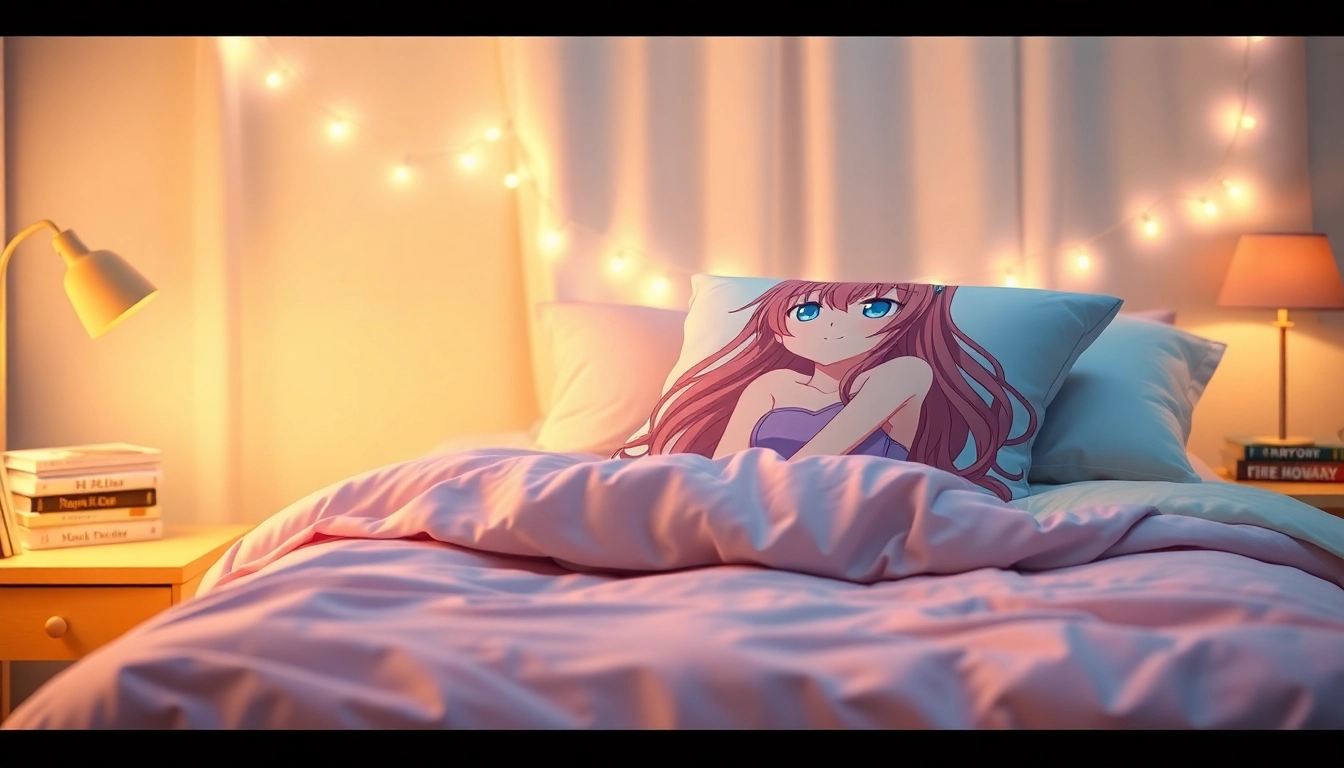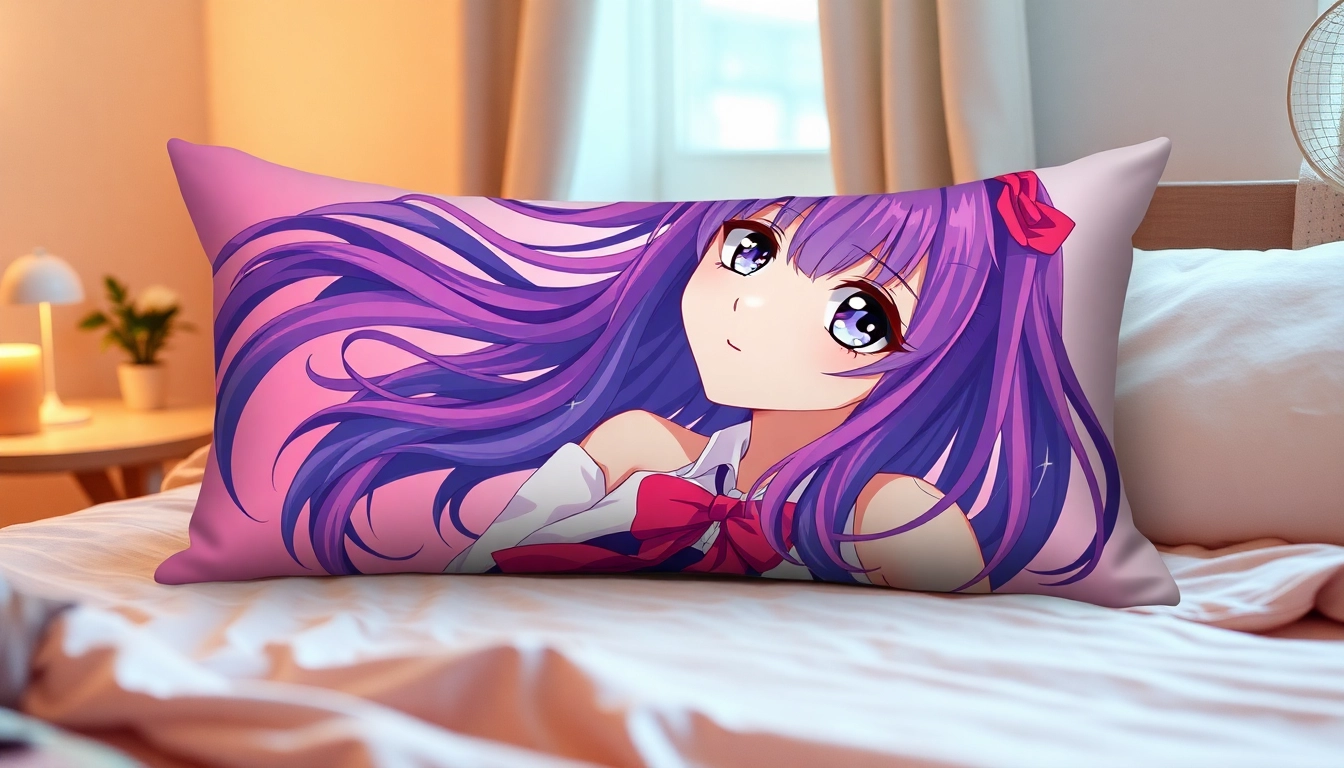Understanding the Dakimakura Pillow
What is a Dakimakura Pillow?
A dakimakura pillow is a large, soft body pillow that originates from Japan, designed to provide comfort and companionship to its users. The word “dakimakura” translates literally to “hugging pillow,” which describes its primary function—to be hugged while sleeping or relaxing. Typically, these pillows are covered with printed designs featuring anime, manga characters, or personal images, appealing mostly to pop culture enthusiasts and those who have a soft spot for anime merchandise. The plush feel and unique designs have made dakimakura pillows a staple in both bedrooms and gaming setups, as they blend comfort with personal expression.
The History and Evolution of Dakimakura Pillow
The dakimakura’s roots trace back to Japan in the 1990s when body pillows became a way for individuals to feel a sense of closeness and security. Initially plain, these pillows transformed into artistic canvases as the otaku culture began to flourish, reflecting a shift towards more personalized expressions of fandom. As demand grew, manufacturers began producing high-quality fabric and printing techniques, making it possible for consumers to obtain pillows that were not just functional but also aesthetically pleasing. In recent years, dakimakura pillows have expanded globally, with enthusiasts around the world seeking custom designs, different materials, and various sizes, leading to an even richer variety of options available in the market today.
Key Features of a Quality Dakimakura Pillow
When considering the quality of a dakimakura pillow, several key features stand out:
- Material: The choice of fabric significantly affects the pillow’s softness and durability. High-quality materials, such as peach skin velvet, 2-way tricot, and tribute silk, are recommended for their smooth texture and ability to maintain print vibrancy.
- Design: A quality dakimakura should feature high-resolution prints that do not fade or peel over time. Custom designs are increasingly popular as they allow users to express their unique tastes.
- Inner Pillow Quality: The filling of the pillow can vary widely, with options ranging from cotton to microfiber. A well-stuffed inner pillow provides a perfect balance of softness and support, ensuring a cozy experience whether used for sleep or decoration.
- Size: Traditional dakimakura pillows typically measure around 150 cm in length, but many variations exist to cater to different preferences. Choosing the right size is essential for ensuring optimal comfort.
Choosing the Right Dakimakura Pillow
Factors to Consider When Selecting a Dakimakura Pillow
Selecting the ideal dakimakura pillow involves considering several factors:
- Comfort Level: Personal comfort is subjective; individuals may prefer different pillow firmness. Trying out a few options can help determine personal preferences better.
- Design Preferences: With an extensive range of images and art styles available, it can be tempting to choose based solely on aesthetics. However, integrating designs that resonate personally can enhance the emotional connection with the pillow.
- Intended Use: Understanding the primary purpose is crucial—whether for sleep, decoration, or as a collector’s item will guide the choice in size, style, and material.
- Care Requirements: Some dakimakura covers are machine washable, while others may require delicate care. It’s important to consider how much effort one is willing to put into maintenance.
Different Materials Used in Dakimakura Pillow
The materials playing a vital role in the comfort and longevity of a dakimakura pillow include:
- Peach Skin Velvet: This material is soft, smooth, and has a slight sheen, making it a popular choice for covers. It also helps maintain image quality due to its high printing resolution.
- 2-Way Tricot: Known for its stretchiness and durability, 2-way tricot is a fabric that feels great against the skin. It’s also capable of displaying high-quality prints, making it a favored option among users.
- Tribute Silk: This luxurious fabric mimics the feel of real silk with a soft touch while being more affordable. It’s lightweight and ideal for those who prioritize aesthetics and comfort.
- Microfiber: A commonly used filling, microfiber provides a fluffy texture, offering a good level of support while remaining lightweight and manageable.
Size Variations and Their Benefits
Choosing the right size for a dakimakura pillow can significantly enhance the user experience. Here are some standard sizes and their benefits:
- Standard Size (150 cm): This is the most common size, providing ample surface area for hugging while fitting comfortably in most beds and couches.
- Large Size (180 cm): Ideal for those who enjoy a more spacious feel, large dakimakura pillows offer additional support and comfort, especially for side sleepers.
- Mini Size: Compact versions suitable for travel or children’s use, these smaller pillows can also serve as decorative cushions, adding a playful touch to a room.
How to Customize Your Dakimakura Pillow
Designing Your Own Dakimakura Pillow Cover
Customizing a dakimakura pillow cover allows for a unique touch that reflects personal tastes. The design process typically involves:
- Selecting Images: Choosing between favorite anime characters, personal artwork, or abstract designs can set the tone for the pillow’s aesthetic appeal.
- Layout Planning: Before finalizing the design, planning how the images will be placed on the cover ensures that important elements are not cut off during production.
- Feedback: Gaining feedback from friends or online communities can provide insight and spark new ideas for improvement.
Image Choices: What Works Best for Dakimakura Pillow
When selecting images for dakimakura pillows, certain considerations help create the best visual impact:
- High Resolution: Images should be of high resolution to avoid pixelation and maintain clarity after printing.
- Color and Contrast: Opt for images with vibrant colors and good contrast for an eye-catching design that stands out.
- Personal Relevance: Choosing images that hold personal significance, like memorable scenes or favorite characters, will enhance emotional connection.
Printing Techniques for Your Dakimakura Pillow
The printing technique used impacts both the quality and durability of the design on the dakimakura pillow. Common methods include:
- Dye Sublimation: This method involves infusing inks into the fabric, resulting in vibrant colors that do not fade easily.
- Direct-to-Garment (DTG): A process that prints directly onto the fabric, ideal for intricate designs with multiple colors. It provides excellent detail and clarity.
- Digital Printing: This traditional method utilizes digital images and produces precise, high-quality graphics, although maintaining image resolution is crucial.
Maintaining Your Dakimakura Pillow
Best Washing Practices for Dakimakura Pillow
Proper maintenance is essential to prolong the life of a dakimakura pillow. Adhering to these washing practices will help achieve the best results:
- Read the Care Label: Always begin by checking specific instructions provided by the manufacturer, as different materials may have different care requirements.
- Cold Wash: Use cold water with a gentle cycle to prevent fading of prints and shrinking of fabric.
- Separate Washing: Wash covers separately from other laundry items to minimize wear and tear.
Cleaning Solutions for Long-lasting Durability
To maintain the integrity and appearance of the dakimakura pillow, consider the following cleaning solutions:
- Gentle Detergents: Using mild detergents or those specifically designed for delicate fabrics can help preserve both the material and the print.
- Avoiding Excessive Bleach: Bleach can damage fabric and prints; opt for color-safe or environmentally friendly products.
- Spot Cleaning: For minor stains, spot cleaning using a damp cloth and mild detergent is often sufficient.
Storage Tips for Your Dakimakura Pillow
When not in use, properly storing a dakimakura pillow can help ensure its longevity:
- Dry Location: Store pillows in a dry environment to prevent mildew and mold.
- Protective Covers: Consider using a breathable cover to keep dust at bay while allowing air circulation.
- Avoid Compression: Avoid stuffing the pillow into small spaces, as this can deform its shape over time.
Enhancing Your Space with a Dakimakura Pillow
Incorporating Dakimakura Pillow into Your Bedroom Decor
Integrating the dakimakura pillow into bedroom decor can create a cozy and visually appealing space. Here are some ideas:
- Accent Pillows: Use dakimakura pillows as accent pieces on beds for an inviting atmosphere.
- Layering with Other Textiles: Combine different textures and colors within the bedding to achieve a harmonious look.
Using Dakimakura Pillow for Luxurious Lounge Spaces
Beyond bedrooms, dakimakura pillows can also enhance lounge areas:
- Couches and Chairs: Placing pillows on couches or armchairs can invite relaxation and leisure while giving the space personality.
- Reading Nooks: A dakimakura pillow serves as a cozy companion for reading or relaxing in a quiet corner of the house.
Benefits of Having a Dakimakura Pillow for Relaxation
Owning a dakimakura pillow provides various benefits for relaxation and well-being:
- Emotional Comfort: The tactile sensation of hugging or resting against a dakimakura can offer emotional solace, especially for those who appreciate their favorite characters.
- Support During Sleep: Dakimakura pillows can enhance sleep quality by providing comfort and support whether sleeping on the side or back.



